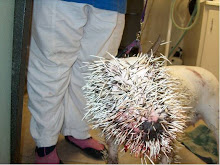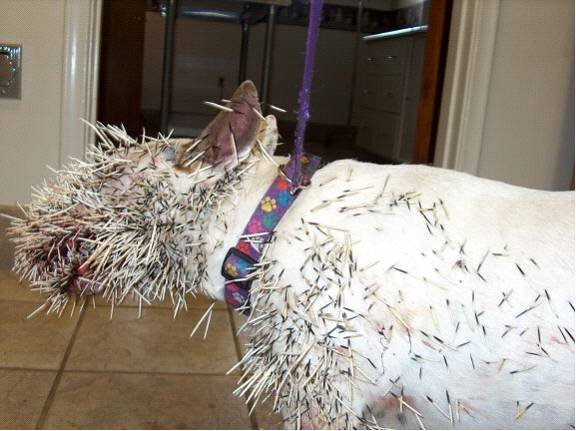Catnip is the popular name for a plant of Asiatic origin called NAPETA CATARIA. It has a chemical within the stem and leaves called NEPETALACTONE. The names "catnip" and "catmint" are sometimes used interchangeably. However, they are two different varieties of nepeta, a perennial groundcover and a member of the mint family. It is a hardy perennial groundcover that grows 2- to 3-feet high. Nepeta faassenii, better known as catmint, forms soft mounds about 2-feet high. Both varieties grow throughout North America.
It is thought that the ability to detect catnip, may be inherited. Only 2/3 of cats respond to it.Catnip was originally native to Europe and Asia. Over 2000 years ago Romans used it for cooking and healing. During the Middle Ages, catnip was used for the treatment of nervousness, colds, and gastrointestinal complaints. It was introduced to the New World by early settlers who cultivated the herb for medicinal purposes and food. As America expanded, so did the popularity of catnip.
Just how did cats become acquainted with it? Some theorize that the Egyptians, known for their worship of cats, were probably the first to offer catnip to their furry idols. Those who support this theory suggest that since Egyptians introduced domestic cats to the Middle East, they may have also introduced the pleasing effects of catnip on most cats. Whenever a cat comes across this growing in a garden, he will often rub up against it and roll around in it, in a sort of drug trip. Most members of the cat family [wild and domestic] react the same way, although not all of them. Young kittens don’t react this way though, and are often repulsed by it. They don’t learn to appreciate it until they are over 3 months old.
The responsive cat approaches the plant and sniffs it. He then proceeds to lick it, bite it, chew it and rub up against it repeatedly with head and chin, then purr loudly, growl, meow, roll over and even leap about. Many of the movements a cat makes mimic the movements seen when a cat is in heat, giving some people the thought that catnip is a [female] feline aphrodisiac, something that most cat scholars refute because it affects both male and female alike.
Feline catnip addicts are lucky though, because they suffer absolutely no side effects from this, unlike humans do when they smoke cannabis, a "kissing cousin" to catnip. Catnip is not the only plant to have this effect on felines. VALERIAN is another one, plus plants that contain ACTINIDINE.
The strange action of these plants though is the strangest thing of all to understand. If any of these plants were given internally, instead of putting FRISK back into the word FRISKY, the actually sedate the cat. It is strange indeed, when they are "uppers" when sniffed, and "downers" when swallowed.
Catnip is easy to grow, and the fresher the product, the more the reaction. Many toys for cats are sold as "with catnip", which supposedly encourages the cat to play. Unless the product is kept sealed in a plastic bag I rarely find these work, as they have been on the shelf for any length of time. I like, however, toys which are made with fresh catnip, as cats like this better, and even when they have ceased to carry the odor, the cats still play with them, but more from habit. For the catnip-loving cat, sniffing this herb is harmless and non-addictive.
One product we carry alot of and seems to pay back in spades is onr called pawbreakers which is a compressed ball of catnip in a very fresh state. Put this in an empty oval or round bathtub and watch Miss Mew SPIN as she bats it around and around like a roulette ball looking to pay out big time!
Wednesday, January 30, 2008
Subscribe to:
Post Comments (Atom)

































No comments:
Post a Comment